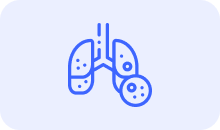Expertise
Home > Expertise
MY Expertise
Varicose Veins
Varicose veins are swollen, twisted veins that often appear just beneath the skin’s surface, mostly in the legs. They occur when the valves in the veins become damaged or weakened, leading to blood pooling and vein enlargement. Common symptoms include aching, heaviness, and discomfort, especially after prolonged standing or sitting. While varicose veins are often considered a cosmetic issue, they can lead to more serious complications if left untreated.


Causes of Varicose Veins
Weak or Damaged Valves
Veins contain one-way valves that help blood flow toward the heart. When these valves fail, blood can flow backward and pool in the veins.
Increased Pressure
Factors such as age, pregnancy, obesity, and prolonged standing or sitting can increase pressure in the veins, contributing to the development of varicose veins.
Genetics
A family history of varicose veins can increase the chances of developing the condition.
Diagnosis
Physical Examination
A healthcare provider will assess the legs for swelling, skin changes, and visible varicose veins.
Imaging Tests
Duplex ultrasound may be used to evaluate blood flow, evaluate which vein is affected & status of deep veins.
Symptoms
Pain and Discomfort
Aching, heaviness, or a burning sensation in the legs, especially after prolonged periods of standing or sitting.
Visible Veins
Enlarged, twisted veins that are often blue or dark purple.
Skin Changes
Color changes in the skin, swelling, and the development of sores or ulcers in severe cases.
Treatment Options
Commonly used thermal ablation techniques employed are Endovenous Laser Ablation (EVLA) and Radiofrequency ablation (RFA). Non thermal varicose treattment includes VenaSeal. It is a specialised adhesive that seals the vein when injected into them without using heat.
Self-Care Measures
Minimally Invasive Procedures
Prevention
Maintain a Healthy Weight
Reducing excess weight can decrease pressure on the veins.
Stay Active
Regular exercise promotes good circulation and vein health.
Avoid Sitting or Standing
Take breaks to move around and elevate the legs when sitting.
book now
Book your medical appointment
Only available on Saturdays between 9-10am AND 6-8pm
MY Expertise
Surgical Expertise
A surgical expertise website showcases the skills, services, and professionalism of a surgeon or surgical practice.




